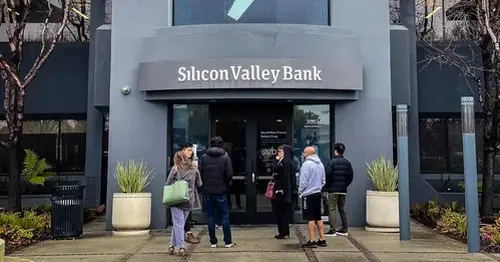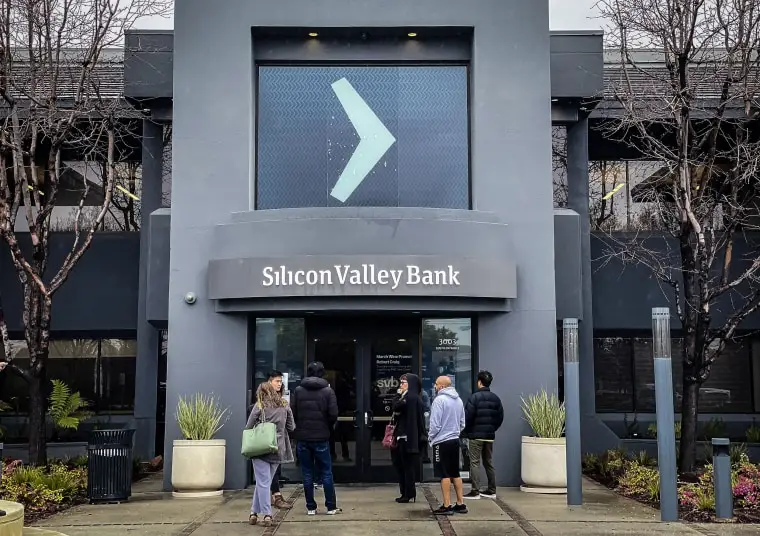
Silicon Valley Bank shutdown: How it happened and what comes next
Silicon Valley Bank, one of the leading lenders to the tech sector, was shut down by regulators Friday over concerns about its solvency.
The move caused a wider sell-off in stocks and sparked fears that other banks may be at risk of failure.
Here’s how the crisis unfolded and what it means for the tech and financial sectors.
What is Silicon Valley Bank?
Founded in 1983, the bank grew to become the 16th-largest in the U.S, with $210 billion in assets. Over the years, according to reports, its client list grew to include some of the biggest names in consumer tech like Airbnb, Cisco, Fitbit, Pinterest and Square.
Why was it shut down?
On Wednesday evening, SVB announced it was planning to raise $2 billion to “strengthen [its] financial position” after suffering losses amid the broader slowdown in tech sector. It also indicated it had seen an increase in startup clients pulling out their deposits. At the same time, the bank signaled that its securities had lost value as a result of higher interest rates.
By Thursday morning, SVB shares began to see a massive sell-off.
Later that day, SVB CEO Gary Becker pleaded with tech investors to “stay calm.” He said that the only danger posed to SVB was if “everybody is telling each other that SVB is in trouble.”
That appears to have morphed into a self-fulfilling prophecy, with tech titans including Peter Thiel reportedly warning startup founders to reduce their exposure to SVB.
By the end of the day, SVB shares had fallen by 60%.
On Friday morning, CNBC reported that SVB had been unable to raise the cash it had been hoping to assemble, and was looking for a buyer as deposit outflows continued to accelerate.
The bank even called the New York Police Department on Friday morning as customers began lining up outside its Park Avenue offices to get their money, but officers who arrived on the scene left after determining “there was nothing criminal” happening, an NYPD spokesperson said.
By noon Friday, California state and federal banking regulators had seen enough and announced they were taking over SVB’s deposits and putting the bank into receivership.
According to the FDIC, this is the second-largest bank failure in U.S. history, behind the collapse of Washington Mutual in September 2008.
What happens next?
Before the shutdown, some some banking analysts dismissed concerns about a potential “contagion” stemming from SVB’s problems that could unsteady the banking sector — though without ruling out the possibility that the bank could fail.
“We believe the sell-off was overdone as large banks have a lot more liquidity than smaller banks, they are more diversified with broader business models, have a lot of capital, are much better managed in regards to risk, and have a lot of oversight from regulators,” JPMorgan analyst Vivek Juneja said in a note to clients earlier Friday.

Morgan Stanley analysts Manan Gosalia and Betsy Graseck echoed that sentiment, saying in a note Friday morning that the issues appeared “highly idiosyncratic and should not be viewed as a read-across to other banks we cover.”
“Yes, funding is a headwind for the industry,” they acknowledged, but emphasized that they didn’t believe at the time that there was a liquidity crunch facing the banking sector.
Regulators’ intervention midday Friday spooked investors and reversed a short-lived recovery in the broader market, with the Dow Jones index down 1.3% in afternoon trading, the S&P down 1.7%, and the tech-heavy Nasdaq down more than 2%.
Brad Hargreaves, a startup founder who previously served on boards of companies that did business with SVB, said the bank was unusual in that often played a dual role as corporate and personal lender to CEOs.
Often, he said, SVB tied a company’s loan to an executive’s mortgage — and that a default on one would trigger a default on the other.
Silicon Valley Bank is to tech what Bank of America is to Main Street, he said, adding, “They got really integrated into the lives of a lot of founders.”
Many startup executives whose companies banked with SVB are now also likely facing a payroll crisis, Hargreaves said, because the FDIC is authorized to release only insured deposits of up to $250,000. That heightens the risk that these companies could announce furloughs or layoffs of dozens or even hundreds of employees, he said.
SVB referred requests for comments Friday to the FDIC’s takeover notice.
Source: https://www.nbcnews.com/business/business-news/silicon-valley-bank-collapse-news-updates-rcna74384






